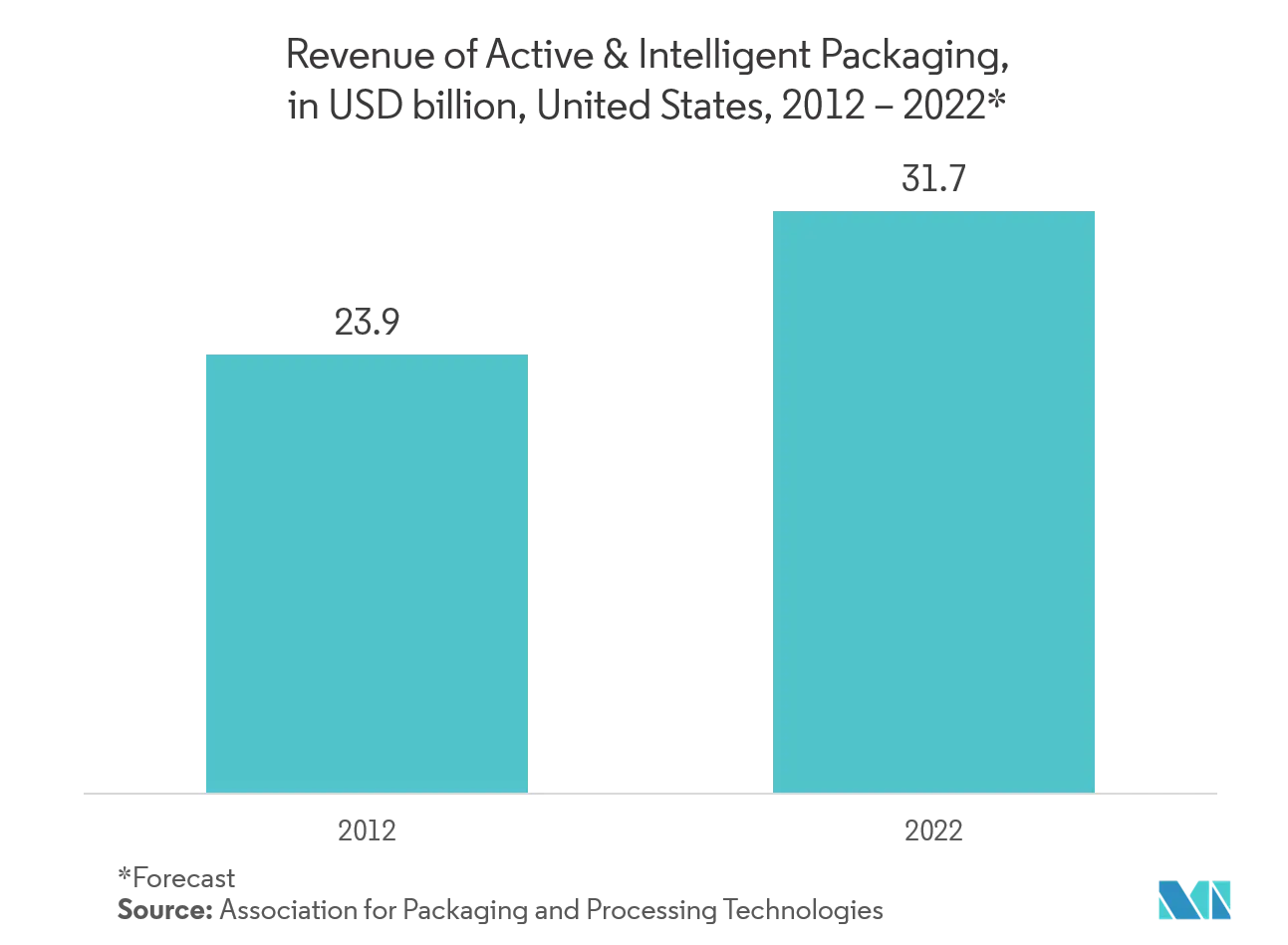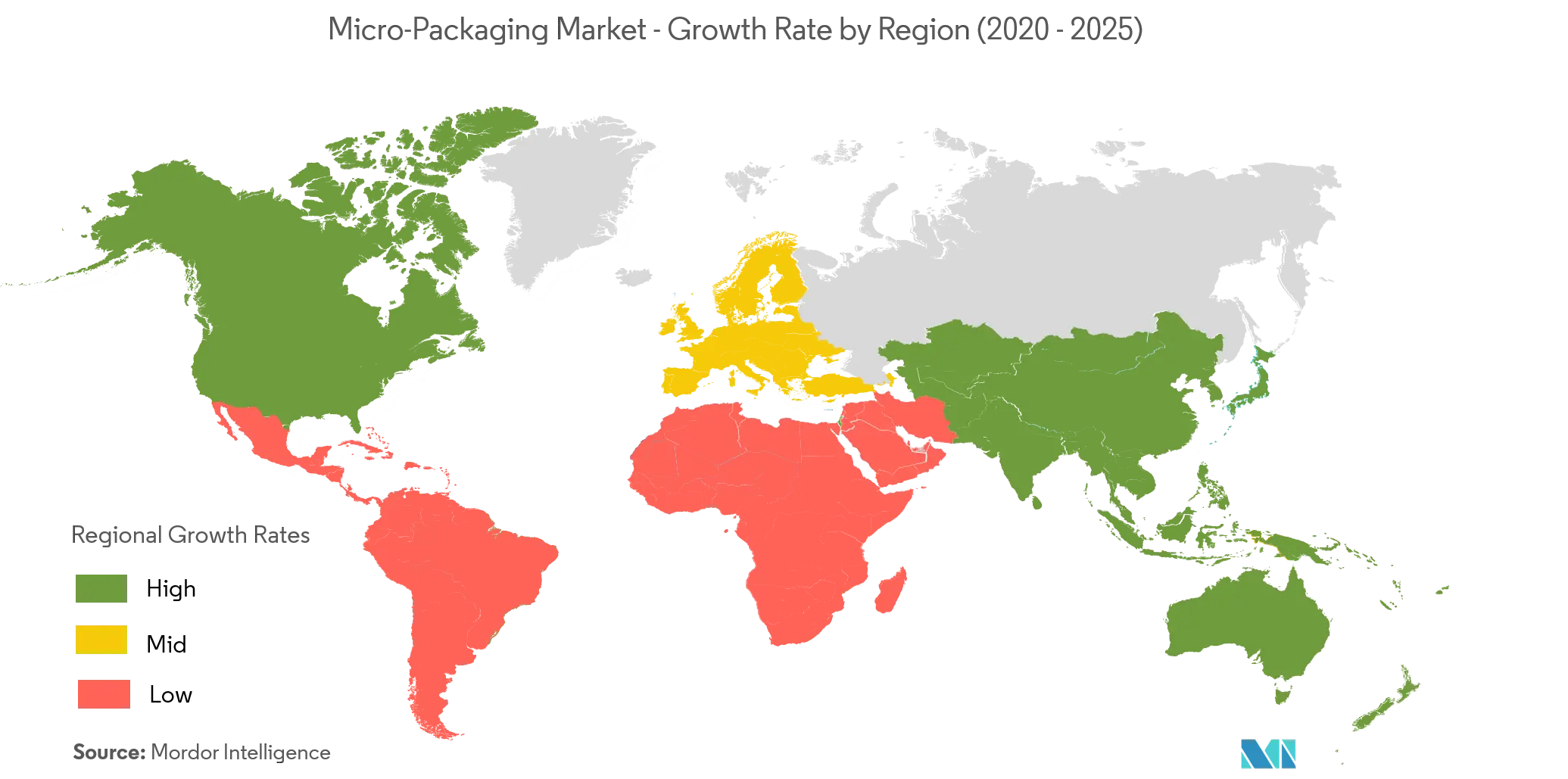Market Trends of Micro-Packaging Industry
This section covers the major market trends shaping the Micro-Packaging Market according to our research experts:
Food Packaging Accounted for High Market Growth
- In the food packaging sector, the prospective of nanotechnology is actively explored including active packaging. The transformation of active compounds from micro to nanoscale offers thereby a new opportunity. Silver nanoparticles are among the most explored nanoparticles, owing to their established antimicrobial potential against multiple commensal and pathogenic strains.
- In response to the vital changes in current consumer demand, the area of Active Packaging (AP) is becoming increasingly significant in food packaging. Principal AP systems include those that involve oxygen scavenging, moisture absorption and control, carbon dioxide and ethanol generation, and antimicrobial (AM) migrating and nonmigrating systems.
- Antimicrobial activity perforates at every corner of the package and its provides surface protection due to the gaseous characteristic of the agent. Some of the antimicrobials (bacteriocins, enzymes, organic acids, nano-sized metal oxides, etc) are handled as non-volatile basis agents in active antimicrobial food packaging and need to be directly contacted with the food.
- Moreover, Micro-perforation implies the puncturing of packaging films with holes ranging from a diameter of 30 mm to approx 200 mm. This packaging offers various superiority including extended shelf life and moisture retention to the food products.
- The industry witnessed a high demand for micro-perforated packaging materials in the form of films and laminates for the packaging of a wide variety of fruits & vegetables. This growth is backed by increased consumption of fruits such as bananas, mangoes and other citrus fruits and vegetables such as potatoes, onions, and tomatoes.
- The United States is witnessing a swift rise in its existing population, primarily due to work-related migrations into the country. This rising population directly impacted the food industry and affected the packaging industry and forms a major part of the workforce dependent on frozen foods and packaged food for appetite. This factor inhibits the demand for micro packaging.

North America Witness High Market Share
- Rapidly expanding the retail sector incites manufacturers to adopt advanced packaging solutions. Leading food and beverage makers from around the world are constantly looking out for packaging materials that fit to their requirements. According to United States Department of Agriculture, in 2017, 64.1 pounds of chicken per person on a boneless, edible basis were available for Americans to eat and in 2018, 35.2 pounds per person of corn products (flour and meal, hominy and grits, and food starch) were available for consumption in the United States. Micro packaging helps to preserve the meat fresh during shipment and for food products it provides barrier properties against the external environment. This product demands increases every year which says that the demand for micro packaging increases in this segment.
- Moreover, the demand for medicine in pharma sector exhibits growth. For instance, according to IQVIA, the total spending on medicines in the United States increased to USD 482 billion in 2018 compared to 2017 which was USD 454.7 billion. With increasing demand, the growth of micro packaging increases, especially for vial and sachet packaging.
- Also, the players are increasingly focusing to innovate in the micro packaging sector. New developments such as Bayer Cropscience AG, the chemical and pharmaceutical company produced a transparent film called durethan which contains nanoparticles of clay that offer a combination of properties which include high strength and toughness, abrasion resistance, chemical resistance, and resistance to cracking. This new film will inhibit the growth in the United States.


